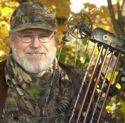The Barn Owl (Tyto alba) is uncommon to rare in Kentucky, yet worldwide it’s one of the most widely distributed of all owl species.
“We have been studying Barn Owls since the 1990s,” said Kate Slankard, a raptor biologist with the Kentucky Department of Fish and Wildlife Resources. “At that time the population was really low. We were only able to find about 25 nests statewide.”
In 2005, the Barn Owl was classified as a species of the greatest conservation need in the department’s State Wildlife Action Plan. The Kentucky State Nature Preserves Commission’s most recent status report lists the Barn Owl as a species of special concern.
Restoration efforts have met with limited success
“We tried hacking (introductions of wild birds), but we didn’t get good survival,” said Slankard. “Then we put out nest boxes, but initially we found that most of them weren’t being used.”

So in 2010 biologists decided to switch gears, and ramp up statewide inventory efforts in hopes of finding more nests by soliciting the help of landowners, who observed barn owls on their property.
This past spring, with the total confirmed nest sites having inched up to about 50 through the years, the department once again asked landowners to report Barn Owl observations.
The results were encouraging.
“We did find many new nests, significantly more than last time,” said Slankard.
Statewide, the total of Barn Owl nests observed is now over 75, suggesting an upward trend in nesting, and population, since the 1990s.
Distribution
Barn Owls are found on every continent except Antarctica, and there is considerable variation in size and color, between the more than 25 subspecies worldwide.
A year-round resident in Kentucky, Barn Owls are found throughout most of the state, but rare to absent in extreme southeastern Kentucky.
“Their numbers are really low wherever there are dense forests,” said Slankard. “They like to be out in the open.”
In the Lower 48 states, the Barn Owl is absent from much of the upper Midwest and Appalachian crest, uncommon in the mid-states, from Virginia to Utah, and south to Mississippi, but common on the Atlantic coast states, south to Florida, and west to the Gulf Coast, southern Texas, New Mexico and Arizona, and Pacific coast states, from Washington to California.
Description
In the Audubon Guide to North American Birds, the description of the Barn Owl starts with this sentence: “With its ghostly appearance, rasping shrieks, and habit of roosting in such places as church belfries, this bird has attracted much superstition.”
The plumage on head and back is a mottled shade of grey or brown, the underparts vary from white to brown and are sometimes speckled with dark markings. The face is characteristically heart-shaped and white. This owl does not hoot, but utters an eerie, drawn-out shriek. They hunt at night and are silent on the wing, flying low over open ground, or watching and listening from a perch.
Adult Barn Owls are typically about 15 inches tall, with wingspans ranging from 31 to 37 inches.
Their diet is mostly rodents — voles and mice, small rats, shrews, but also young rabbits, small numbers of birds, lizards, insects, but rarely frogs or fish.
Barn Owls have excellent vision in low light, and hearing so acute they can locate and strike prey in total darkness.
Their preferred habitat is grasslands, pastures, orchards, hayfields, cropfields, overgrown fields, open marsh, and reclaimed strip-mine lands.
Nesting Habits
In courtship, males perform display flights, including loud wing-claps, and males find food for females and feed them.
Barn Owls nest in a wide variety of places, including hollow trees, caves, barn lofts, silos, grain bins, church steeples, abandoned houses, dry wells, and crevices under bridges. They will also use predator-proof nest boxes.
For more outdoors news and information, see Art Lander’s Outdoors on KyForward.
No real nest is built, but sticks and debris are arranged into a crude depression.
Barn Owls mate for life unless one of the pair gets killed, then a new pair bond may be formed.
Breeding takes place at varying times of year according to locality, with a clutch averaging about four eggs. In Kentucky, most nesting activity occurs from March-August.
The female incubates the eggs, and she and the young chicks depend on the male for food for the first several weeks after hatching. Young usually take their first flight in 55 to 65 days.
Dispersal of the young is typically over distances of about 50 to 200 miles, but some individuals may roam up to 1,000 miles from where they were hatched.
Rodenticides Pose a Secondary Poisoning Risk to Barn Owls
As part of the statewide inventory efforts, biologists are collecting dead barn owls to conduct necropsies, and test for contaminants.
Slankard said it’s a concern that appreciable levels of rodenticides were found in some of the owls tested.
“Mice eat the bait, and bleed for days until they die,” said Slankard. “That makes an easy meal for owls.”
Rodenticides present a secondary poisoning risk to any animals, wild or domestic, that hunt rodents, or scavenge the dead carcasses of mice and rats.
Landowners who think they’ve seen a Barn Owl on their property should contact Kate Slankard at 1-800-858-1549 x 4474 or e-mail: kate.slankard@ky.gov.
Art Lander Jr. is outdoors editor for NKyTribune and KyForward. He is a native Kentuckian, a graduate of Western Kentucky University and a life-long hunter, angler, gardener and nature enthusiast. He has worked as a newspaper columnist, magazine journalist and author and is a former staff writer for Kentucky Afield Magazine, editor of the annual Kentucky Hunting & Trapping Guide and Kentucky Spring Hunting Guide, and co-writer of the Kentucky Afield Outdoors newspaper column.






















